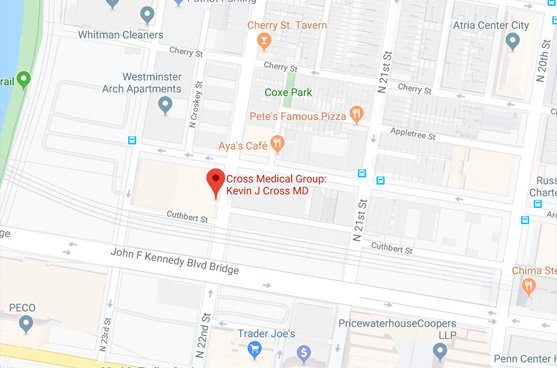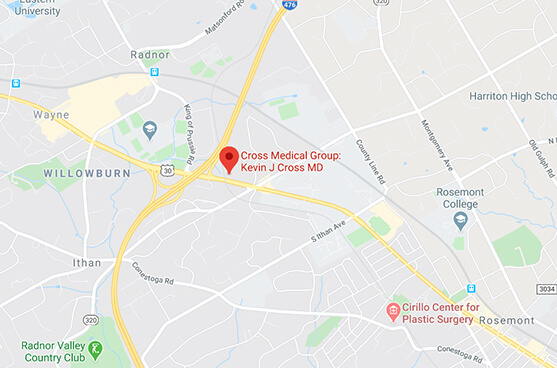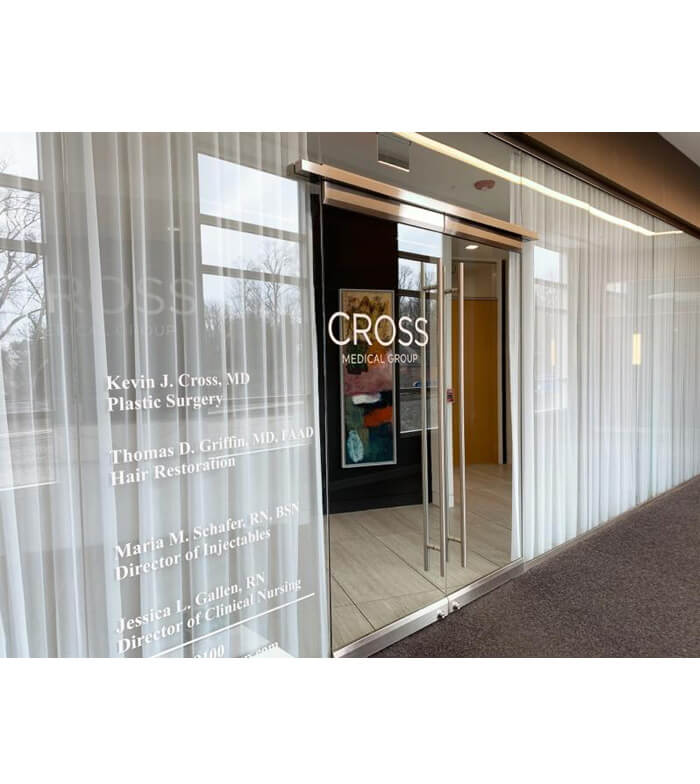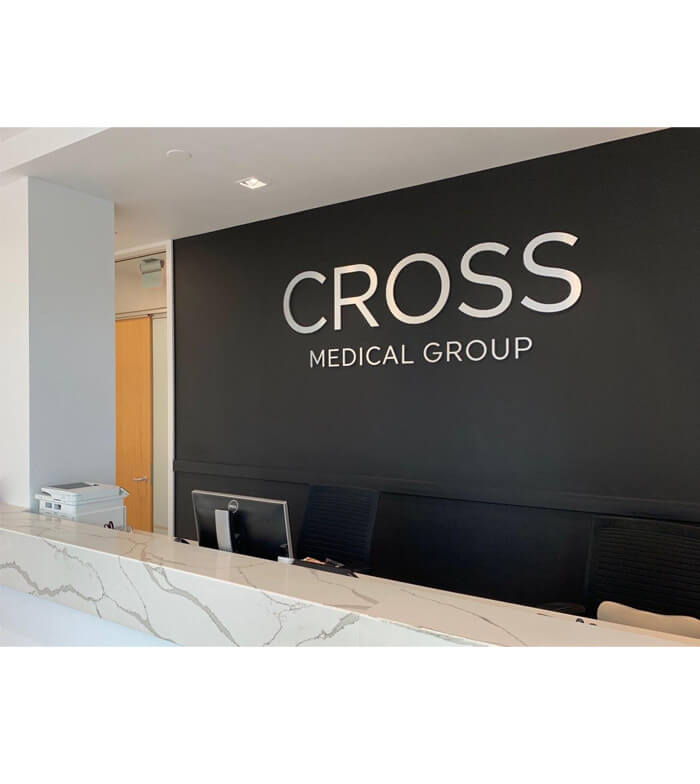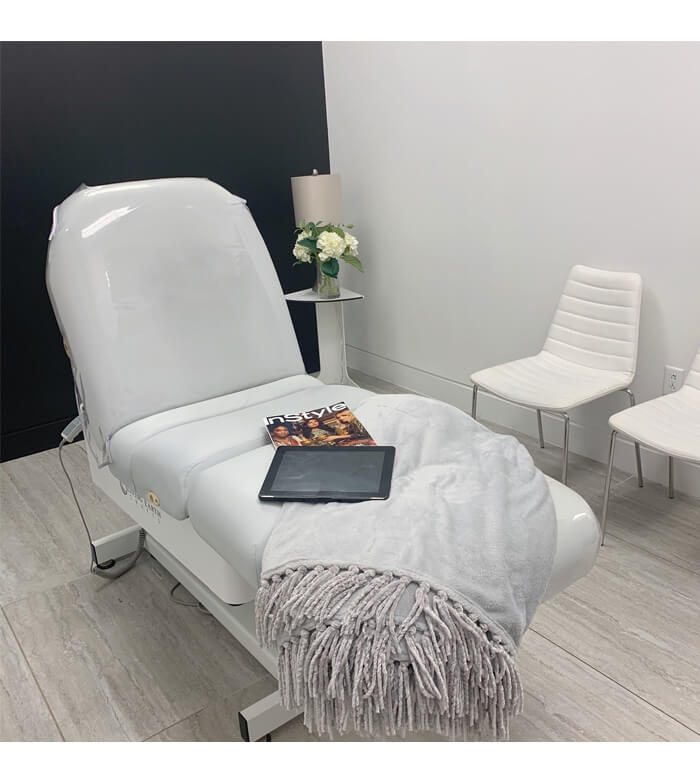Corrective Hair Transplant
Improve or Fix a Previous Unsuccessful Transplant Surgery in Philadelphia and Villanova
People often wonder whether it would be possible to fix a hair transplant that has gone wrong. When a patient is not happy with the results of a hair transplant, he or she may seek a corrective hair transplant from the Philadelphia and Villanova area’s Cross Medical Group in order to achieve a more natural look. The corrective hair transplant techniques we use have been developed over decades with the goal of maximizing natural-looking results and minimizing side effects, risks, and recovery. As procedures continue to evolve, we will also continue to advance our practice to offer the latest in hair restoration technology.
Corrective Hair Transplant Basics
Hair restoration is a very effective way of correcting pattern hair loss in men and women. Over recent years, techniques for performing hair restoration have made the surgery more reliable and capable of producing very natural, lasting results. There are, however, still plenty of opportunities for hair transplants to produce undesirable results.
Many individuals—often those who were the recipients of earlier hair transplant techniques—have had hair transplant surgeries that failed to give them natural-looking results or caused other problems. It’s possible to fix a previous hair transplant that has gone wrong. For those who have had a negative hair transplant experience in the past, a corrective hair transplant can be beneficial as corrective hair transplants can fix some of the damage and restore a more natural appearance.
Common Reasons Why Hair Transplants Fail
With hair restoration becoming more and more popular, many practitioner and medical practices seek ways to capitalize on this revenue stream—even ones who may not have the experience or skills required to successfully perform hair transplants. To get optimal results, you should always go to a skilled, experienced, and reputable provider. When a hair transplant is performed by an inexperienced practitioner, a patient may get poor results and dissatisfaction, often leading to low self-esteem. The failure of a hair transplant is often due to its poor execution. Common mistakes include unskilled removal of hair follicles from the donor site, which can result in scarring or uneven patches, and unnatural or unsuitable placement of the hair grafts. In some cases, grafts are placed so poorly that new hair growth does not occur. A bad hairline design, performing the surgery on unsuitable candidates, and a physical or mental illness can also lead to an unsuccessful hair transplant. Negligence of aftercare instructions can also be damaging to the grafts and lead to less than satisfactory results. A corrective hair transplant may be needed to address these issues.
SCHEDULE A CONSULTATION
If you would like more advice about what to expect from a corrective hair transplant in Philadelphia and Villanova, you can contact Cross Medical Group by calling (215) 561-9100 (Philadelphia), or (610) 688-9100 (Main Line's Villanova), or submit a contact form to request a consultation.
The Procedure for a Corrective Hair Transplant
Corrective hair transplants are often very challenging and time consuming. The most common method for correcting a previous, failed hair transplant is to undergo another hair transplant, and the hairline may need to be restructured. We are able to easily identify what has gone wrong during a primary hair transplant. We then work with each patient to create a corrective hair transplant plan to correct these mistakes so we can craft a more natural outcome for the patient. Once the errors have been identified and a plan created, the corrective hair transplant is performed similarly to any other hair transplant we perform.
- The first step in a corrective hair transplant involves harvesting hair grafts from the donor site. We will take special care to preserve the integrity of the scalp in the donor area and, if necessary, will work to address any scarring that occurred during the primary hair transplant. Harvesting may be done using Follicular Unit Excision, or we may utilize the more traditional strip harvesting technique. The approach used for the corrective hair transplant will depend upon the patient’s unique needs and the condition of the donor site.
- Next the hair grafts are carefully prepared for transplantation.
- Finally, the hair grafts for a corrective hair transplant are individually placed in the recipient site, with special attention given to the angle of placement, density, pattern and hairline shape.
Our team manages the entire corrective hair transplant process from start to finish, helping to ensure a more consistent, natural result.
Candidates for a Corrective Hair Transplant
The most effective way to correct a botched hair transplant will depend on what type of problem you’re experiencing. If the hair at the back and sides of the scalp has been depleted, a corrective hair transplant may be more difficult, and you might need to try other hair restoration strategies such as collagen induction therapy, oral Finasteride (Propecia), Topical Minoxidil (Rogaine), or Laser Cap.
Common Signs That You May Need a Corrective Hair Transplant
You may need a corrective hair transplant if you have symptoms such as bad scarring, uneven skin in the areas where grafts are transplanted, patchy hair growth, poor hair density, an unnatural-looking hairline, hair grafts that grow at odd angles, or a “pluggy” appearance of hair grafts.
What to Expect During Recovery from a Corrective Hair Transplant
The recovery period following corrective hair transplant is similar to that of a primary hair transplant. While some patients may able to return to work the next day, many patients prefer to take a few days off from work, as some scabbing will occur and last for about one week. Bandages usually are not required. It is important to follow the post-operative instructions given by the staff. More strenuous activities and exercise should be avoided for seven days to prevent injury to the donor and recipient sites. We encourage our patients to protect their scalps from the sun to prevent discoloration. A hat can be worn right away and is a great way to ensure complete protection from the sun. After the donor and recipient areas have healed, sunscreen can be applied to the scalp.
What to Expect from Corrective Hair Transplant Results
When performed by a practitioner who specializes in corrective hair transplants, the results of the corrective hair transplant surgery will be natural, aesthetically pleasing, and a dramatic improvement from the primary hair transplant. Hair begins to grow around three months postoperatively. The full results of a hair transplant are usually seen within 12 to 18 months. More than one corrective hair transplant procedure may be required, the need for which will be accessed after the hair grows in.
How to Prevent a Botched Hair Transplant
When it comes to hair restoration surgery, the best results are achieved when a highly skilled and experienced hair restoration practitioner performs the surgery from start to finish so that a corrective hair transplant will not be needed. This helps prevent errors when the hair grafts are harvested from the donor site and when they are transplanted to their new location so that a corrective hair transplant is not likely to be needed. Our team has the experience and artistic skill necessary to ensure that follicles are transplanted properly for a successful hair transplant. We can reproduce the patient’s natural hairline, providing a natural and aesthetically pleasing outcome.
Other Hair Restoration Approaches
In addition to a corrective hair transplant, there are many other types of hair restoration procedures available from Cross Medical Group, including surgical as well as non-surgical treatments to improve hair growth. Surgical options include a male hair transplant, female hair transplant, and beard transplant. Collagen induction therapy is a non-surgical approach that can help to stimulate hair growth after corrective hair transplants or other types of hair transplants.
SCHEDULE A CONSULTATION
Learn more about a corrective hair transplant in Philadelphia and Villanova by contacting Cross Medical Group. Call us at (215) 561-9100 (Philadelphia), or (610) 688-9100 (Main Line's Villanova), or submit a contact form to request a consultation if you would like to discuss hair restoration.



